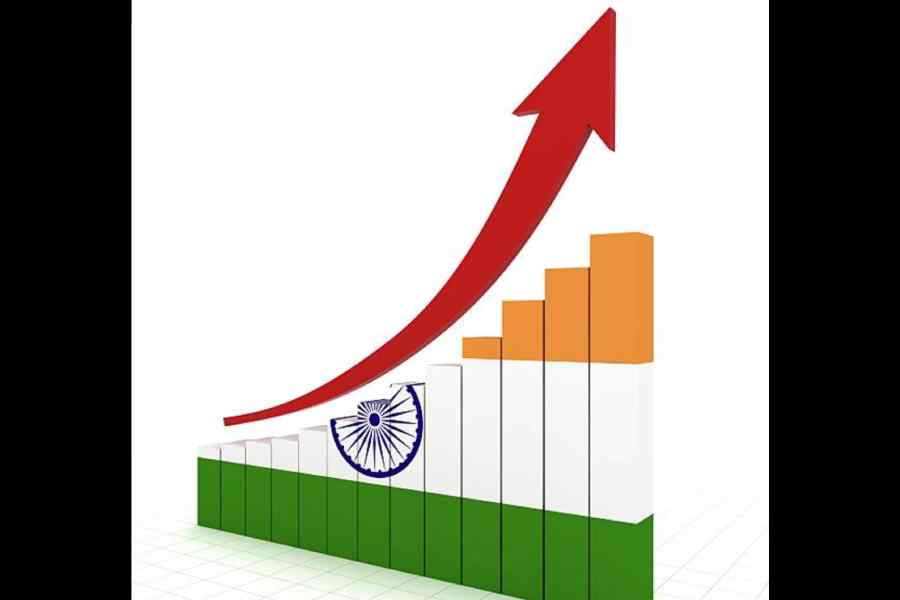India is attracting attention for its strong economic growth — it is one of the world’s fastest this year and is likely to be so next year too. Its contribution to world economic growth is foreseen to be rising to 18% in five years from the current 15%. Its growing size may make it the third biggest economy by 2030, overtaking richer countries like Germany and Japan after surpassing France and the United Kingdom last year. The positive expectations centre upon India’s long-term economic outlook due to promising structural dynamics that outshine some of the biggest economies where they have faded or are turning downward.
This optimism is somewhat analogous to the post-2008 period when similar expressions of confidence accompanied India’s strong rebound from the crisis against a backdrop of strong growth. In the first decade of this millennium, real GDP had grown with unprecedented robustness: 8.8% on average in the five pre-crisis years, with a stellar return to 9.4% average in the two years after (pared down to 8.2% in the new GDP series). This accomplishment had engendered comparable promise about India’s long-term economic prospects that were expected to materialise in the years that followed. A broader growth narrative at the time focused upon BRICS (Brazil, Russia, India, China and South Africa), a group of countries with matching growth performances in similar time and a vast economic potential that could be tapped into.
Subsequent growth outcomes did not, however, turn out as hoped. The BRICS’ economic stories diverged thereafter, and the group itself lost validation. Meanwhile, in the post-global financial crisis period — one short of a decade to just before the pandemic — the Indian economy has grown an average 6.4% annually in real terms, a good two percentage points below the corresponding pre-2011-12 average by any measure (that is, the old or the new GDP series). India’s estimated potential growth, or the capacity to grow in a sustained way without hitting the speed limit or inflation, that was routinely believed to be around 7%-7.5% is now universally regarded to be nearabout 6% by economists.
The parallels, in a context when many countries are again struggling to grow, are remarkable. There are sufficient reasons to explore what’s new and old, what’s different and not, and what could be the pressure points. This is not to dismiss expectations; historical experience merits deeper evaluation.
Many underlying growth drivers are similar and positive. Demographics, for example, defined by a large working population share, conferring advantages over ageing populations elsewhere, including in China, a large and fast-growing middle class, rapid urbanisation, infrastructure deficit, an ample and unexploited scope for manufacturing and exports and continuing comparative advantage in services are the driving forces. Altogether, these make India an attractive investment destination.
Newer additions to this configuration include digital transformation, technology enabled services trade, and global tech majors and other firms seeking to locate chunks of their business and research in India. The additional novelties include strategic shifts or diversifications from China by multinational companies, geopolitical realignments based upon friendships, shared values, and security concerns.
The common reasons why expectations remained unmet after growth plummeted in 2011-12 were a boom-bust credit cycle leading to bad loans and balance-sheet stresses amongst corporates and banks, imbalances from unsustainable macro policies, the lack of structural reforms, allegations of corruption, misgovernance and policy paralysis, unjustifiable and exorbitant tax demands, some retrospective, amongst the major factors.
These deficiencies are perceived to have been overcome since then. Better macroeconomic management and fundamentals, prudent and disciplined policies, significant structural reforms spanning GST, bank recapitalisation, inflation targeting, labour legislation overhaul, digitisation, formalisation and increased access to electricity, housing, and banking are amongst other advances.
That the economy has become more competitive due to these changes is not evident. Private investment has failed to recover from its slide in 2011-12, persisting at those lowered levels. Gross savings, including those of households, which underpin domestic financing, are down by at least five percentage points in the share of the national output.
There are some reversals too; for example, in trade policies, with significant shifts in the growth model, which has become less open, more protectionist, self-reliant, and State directed, while private business is more concentrated. Some aspects remain unchanged: a coercive tax regime (often called ‘tax terrorism’) stays intact. This is undoubtedly a deterrent. Indeed, recent developments like retrospective GST demand from gaming entities bear a striking resemblance to the past. As does the recent, post-pandemic boom in personal loans, especially unsecured ones, whose unbridled growth has been flagged by the central bank. This is a reminder of the previous credit bust with potential stress in household balance sheets that could drag down consumption to an incomplete recovery and a slower growth of disposable incomes. Bank credit flows have radically altered in just over three years’ time: industry borrowing share was nearly seven points lower last month over April 2019; the corresponding increase in the share of personal loans in bank credit is eight percentage points. This points to a potential locus of financial stress and consequential effects on growth.
The objective underlying this comparative illustration of the domestic context then and now is to identify critical aspects that could potentially affect the translation of high expectations into actual outcomes. One may note the absence of global factors in the examination. This isn’t necessary — it is precisely the capacity to grow on domestic strengths alone in unfavourable, global economic and geopolitical conditions that generates the extraordinary optimism about India’s long-term outlook. It is the domestic environment, its strengths and weaknesses, that are focal points, therefore.
Twice over is not uncommon but it is often said that this time is different. From a historical perspective highlighted here, what happens in this round of optimistic expectations is to be watched with interest.
Renu Kohli is an economist with the Centre for Social and Economic Progress, New Delhi










